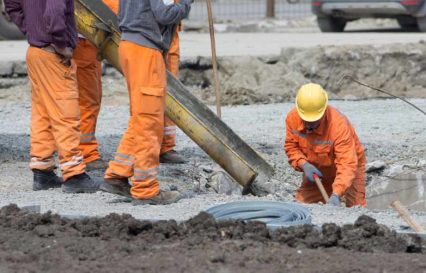FAQ – Frequently Questions and Answers help provide ways of understanding more about the concrete industry. We have posed some helpful questions that have been asked about how to use this site affectively.
While there maybe many question unanswered we have selected a collection of common question and hope this will help you and you projects.
If you have any questions then post the question below, we will answer you query and if we consider it a good addition to our collection we will add it to the lists below. We hope you find your solution. Try a search here follow this link


A – Concrete is a material which is extensively used in the construction and building industry. Concrete is usually made up of large aggregate particles (stone), sand, water and cement it will often have chemical additives to enhance or alter its performance and in some cases have a fibre content.
A – Concrete Mix designs will vary by applications and strength required, a basic concrete mix would be 1 part cement to 2 part sand and 4 parts aggregate. For the best advice contact your local concrete supplier and tell then about them application that it is required for.
A – Concrete is one of the most commonly used man-made materials on earth. It’s an essential construction material used in the construction of buildings, bridges, roads. Its uses range from structural applications, to decorative projects as well as , kerbs, pipes and drains.
A – Concrete has the lowest carbon over its lifecycle. It has unequelled strength, durability, longevity and resilience.
Maximized energy efficiency via thermal mass.
durability in any environment.
a building material that doesn’t burn, rust or rot.
A – Foam Concrete is a concrete mix with an air content of around 20% oil is medley used in Utility applications and used to fill large voids for example where an underground tank has been removed.
A – A line pump takes the material from the delivery vehicle through a series of pipes to where its is needed.The Lines allow the Concrete or Screed to be pumped over large distances often through a building or avoiding obstacles. Line Pumps are mounted to a chassis and are generally smaller than a Boom Pump.
A – Boom Pumps are mounted to a truck chassis and Pump the Concrete or Screed through pipes mounted on an hydraulic articulated arm. Boom Pumps can lift the arm to great heights and often over buildings to where the material needs to be placed.
A – You would Hire a Concrete Pump usually when you have large volumes of Concrete or Screed required and where manpower is insufficient to use wheel barrows. Pump Hire is ideal where the material is required above ground or over a building or to avoid obstacle that are in the way of the pour. Concrete Pump Hire is often required when the Concrete or Screed Delivery vehicle is unable to pour directly into the area that the material is needed.
A – Sand Cement Screed is a method of finishing off a floor surface to form a suitable sub base for a final floor covering to be applied. In some applications the Screed Floor will be polished and used as a final wearing surface. Traditional Sand Cement Screed is a semi dry mixture of sand & cement with little or no water. It is usually finished by hand or machine.
A – Liquid Screed or Flowable Screed is a mix comprising of sand water and a binder content which can be cement or calcium sulphates. In some instances chemicals are used to enhance performance. Like Sand Cement Screed – Liquid Screed is used to create a final floor surface. Liquid Screed require little compaction and can offer quick drying times and often used with underfloor heating systems.
A – The Optimal thickness of bonded Sand Cement Screed is 25-40mm an un-bonded Screed should have a minimum thickness of 50mm a floating Screed should have a minimum thickness of 65mm-75mm depending on the load. Liquid Screed is usually laid at a minimum of 40mm.
A – Traditional Sand Cement Screed can take days to dry out sufficiently to take foot traffic. Liquid Screed can take 24-48 hours because it can usually be laid in a thinner layer than traditional Screed
A – Screed is simply a top layer of material laid over a sub floor, it is used to cover structural flooring Concrete and can be applied to either a solid in situ or precast Concrete floor slab.
A – Dry Screed is is a traditional mix of coarse sand & cement. Despite the name this type of Screed requires enough water to reach a consistency where a handful, when squeezed will clump together without producing more than a few drops of water.
ConcreteSupermarket is a resource for projects relating to the concrete industry. The lists of suppliers cover England and Scotland with new additions being added.
Using the site is FREE and access to concrete and related concrete supply companies is FREE as well. There is no catch we discovered this facility doesn’t exist without being motivated to purchase or rent.
We created ConcreteSupermarket where users can search for suppliers of concrete and related equipment like boom pumps etc for free.